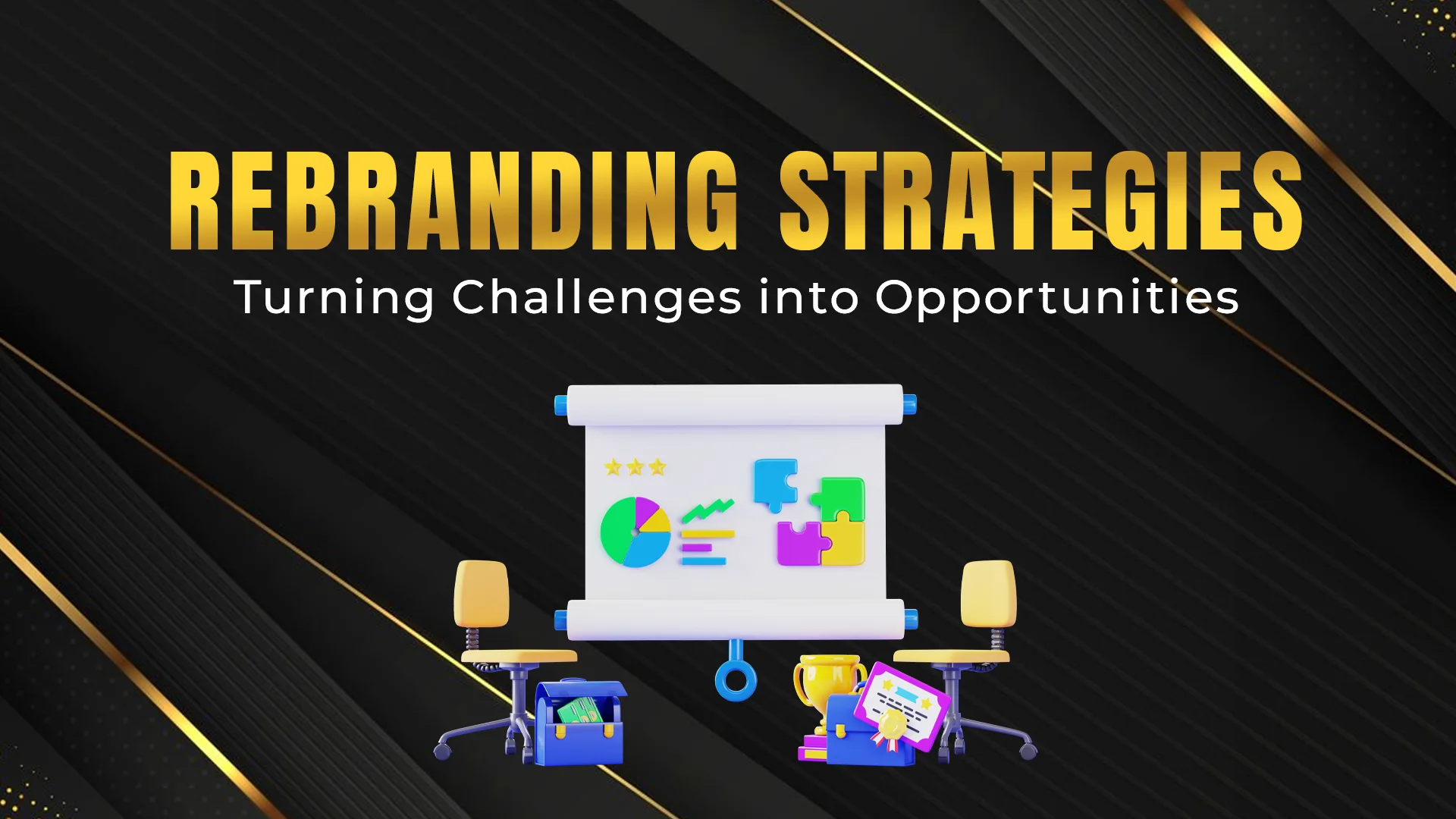Ever noticed how some companies suddenly switch up their logos or slogans? That’s what rebranding is all about, and let me tell you, it’s a pretty big deal in the business world. If you’re struggling to connect with your audience or feeling like your brand needs a fresh start, maybe it’s time to consider rebranding.
Whether you’re kicking off a new business venture or launching a new product, getting your brand right is key. We’re talking about everything from your logo and name to your online presence and style guide. It’s not just about sticking on a new logo and calling it a day; it’s a whole strategic process.
So, what’s the secret sauce behind crafting killer rebranding strategies? Let’s dig in and find out together!
Understanding the Need for Rebranding
Rebranding goes beyond just updating a company’s name or logo, it’s a strategic process aimed at reshaping how people see the brand. It involves thorough research, strategic planning, redesigning visual and verbal elements, and finally, introducing the new brand to the public. A strong brand can attract more customers, build loyalty, increase revenue, and make the company more appealing to talented employees. It’s a crucial strategy for staying competitive in the market.
So, how can you determine if a rebrand is necessary? There are multiple signs:
- Your brand’s vision no longer corresponds with your brand name.
- You feel uncomfortable sharing your business card or website address.
- You’re struggling to differentiate yourself from competitors.
- Your brand has grown disorganized or unduly complex.
- Your business model or strategy has changed significantly.
- You’ve outgrown your current brand.
- You’re undergoing a merger or acquisition.
Recognizing these signs is crucial as they indicate that it’s time for a rebrand. Whether it’s to realign with your brand’s vision, simplify your brand experience, or adapt to changes in the business environment, rebranding is an essential part of any company’s growth journey.
Identifying Rebranding Challenges:
Embarking on a rebranding journey demands strategic finesse to navigate obstacles effectively. AtTogwe, drawing from our extensive experience, we’ve distilled key challenges and actionable insights for success.
Clarity of Goals: Define clear objectives upfront to align stakeholders and steer the rebranding process purposefully.
Managing Resistance: Communicate benefits transparently and involve stakeholders to mitigate resistance and foster support.
Budgeting Wisely: Set realistic budgets, prioritize initiatives, and explore cost-effective solutions to overcome financial constraints.
Alignment and Buy-in: Implement robust change management strategies and foster inclusive decision-making to ensure stakeholder alignment.
Efficient Resource Management: Proactive planning, leveraging technology, and prioritizing tasks are vital to overcome timing and resource constraints.
Tradition vs. Innovation: Strike a balance between preserving core values and embracing innovation by establishing clear guidelines and fostering a culture of adaptability.
Measuring Success: Establish pertinent metrics and KPIs to gauge outcomes accurately, ensuring the rebranding initiative’s efficacy.
In essence, by addressing these challenges head-on, organizations can navigate the rebranding landscape adeptly, maximizing success prospects and reinforcing their relevance in a dynamic market environment.
Strategies for Overcoming Rebranding Challenges:
Navigate rebranding hurdles with a blend of innovation and tradition, emphasizing consistency, authenticity, and effective communication. Let us now discuss the methods for conquering these obstacles.
Embrace Innovation and Tradition: To navigate rebranding challenges effectively, balance innovation with honoring traditional brand roots. Innovate to stay relevant while respecting core values and heritage, ensuring a meaningful transformation without losing the brand’s essence.
Consistency is Key: Maintain consistent messaging and identity throughout the rebranding process across all channels. This fosters consumer trust, recognition, and loyalty, laying a solid foundation for future growth.
Authenticity Matters: Prioritize transparent and genuine communication, avoiding artificial tactics. Authenticity builds trust and fosters lasting connections with consumers, enhancing brand loyalty over time.
Stand Out from the Crowd: Offer unique and compelling experiences to differentiate the brand in a saturated market. Creative approaches capture consumer attention, carving a distinct niche and reinforcing the brand’s position.
Effective Communication: Master clear and consistent communication across platforms to resonate with the target audience. Transparent and engaging communication strengthens consumer connections, driving brand loyalty.
Understand the Target Audience: Tailor rebranding efforts to meet the needs and preferences of the target demographic. Understanding consumer motivations and values ensures campaigns resonate on a meaningful level.
Adaptability and Flexibility: Stay agile and responsive to changing market dynamics by monitoring trends and feedback. Adjust strategies based on insights and emerging opportunities to remain relevant and competitive.
Conclusion:
Mastering rebranding strategies requires a blend of innovation and authenticity. By adopting these strategies, brands can tackle challenges head-on and emerge stronger. Let’s embark on this journey together, crafting compelling narratives and fostering lasting connections.
FAQ’s
What is rebranding, and why is it important?
Rebranding is the process of updating a company's identity to reshape how it's perceived. It's crucial for staying competitive, attracting customers, and adapting to changes in the market environment.
What are the key challenges in rebranding?
Challenges include setting clear goals, managing resistance, budgeting effectively, gaining alignment and buy-in from stakeholders, resource management, balancing tradition and innovation, and measuring success accurately.
What are the benefits of successful rebranding?
Successful rebranding can lead to increased brand recognition, consumer trust, loyalty, differentiation in the market, and alignment with evolving consumer preferences.
What resources are needed for a successful rebrand?
Resources include skilled personnel such as designers, marketers, and project managers, as well as budget for design, marketing materials, and any necessary legal or consulting services.

